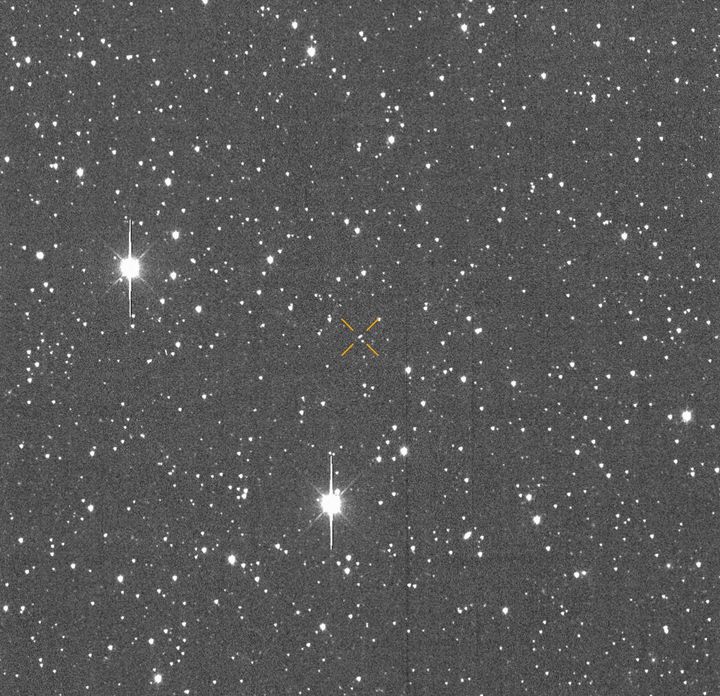Here’s The Likelihood Of An Asteroid Slamming Into Earth In 2032, According To Scientists
NASA researchers say an asteroid known as 2024 YR4 now has about a 1.5% chance of hitting Earth in 2032, a decrease from a record high estimate the day prior.
NASA’s Jet Propulsion Laboratory said Tuesday that 2024 YR4 had a 3.1% chance of impact, but astronomers lowered the estimate on Wednesday after darker skies and increased visibility allowed them to take a better look at the asteroid. However, the European Space Agency (ESA) estimates the likelihood to be at 2.8% as of Wednesday.
Advertisement
The asteroid is estimated to be between 130 to 330 feet wide, and astronomers believe it could plow into the planet on Dec. 22, 2032.
There is also a 0.8% chance it could slam into our moon that day instead, according to NASA.
The International Asteroid Warning Network (IAWN) said the following regions on Earth are at risk of being hit by the asteroid in 2032: the eastern Pacific Ocean, northern South America, the Atlantic Ocean, Africa, the Arabian Sea and South Asia.
The risks to Earth if the asteroid does collide with the planet are uncertain at the moment as its mass and potential impact location are unknown. As The New York Times notes, this could lead to a variety of possible scenarios from leveling a city to landing in the ocean and causing relatively little harm.
Advertisement
CBS News space consultant Bill Harwood said that the impact would be “catastrophic” if the asteroid landed in a populated area, but the damage wouldn’t be global.
“It wouldn’t be something like the rock that killed the dinosaurs,” Harwood said. “It wouldn’t affect the global climate, but it would certainly be a disaster of every proportion. So we’re all hoping that doesn’t happen.”
While 2024 YR4′s risk level on Tuesday was the highest ever recorded, it’s overwhelmingly likely that the asteroid misses Earth. However, the IAWN notifies the public of an asteroid anytime there is a 1% chance or above of impact, which is extremely rare.
Advertisement
The last time an asteroid met this threshold was in 2004, when asteroid Apophis’ probability of hitting Earth in 2029 was raised to 2.7%. After its 2004 discovery, astronomers tracked Apophis, estimated to be about 1,100 feet across, to better understand its path. NASA now says there is no risk of Apophis striking Earth for at least a century.

via Associated Press
2024 YR4 was discovered last December, when it had an estimated 1% chance of crashing into the planet in 2032. Passing the planet once every four years, the space rock blew past us in 2024 and is expected to do so again in 2028 without incident.
Advertisement
“We are not worried at all, because of this 99 percent chance it will miss,” Paul Chodas, director of NASA’s Center for Near Earth Object Studies, said at the time. “But it deserves attention.”
The asteroid will no longer be visible starting in April, but experts intend to study it using the James Webb Space Telescope in the meantime. It will be visible again in June 2028.
“As more observations of the asteroid’s orbit are obtained, its impact probability will become better known,” NASA said in a planetary defense blog post published on Feb. 7. “It is possible that asteroid 2024 YR4 will be ruled out as an impact hazard, as has happened with many other objects that have previously appeared on NASA’s asteroid risk list, maintained by NASA’s Center for Near-Earth Object Studies.”
Advertisement
According to NASA, asteroids were born during the formation of the solar system 4.6 billion years ago. There are currently 1,362,002 of them known to NASA — many of them ranging from as tiny as 3 feet to as large as 329 miles.
Besides 2024 YR4, there are not currently other asteroids with an impact probability above 1% at the moment, according to NASA.
Go Ad-Free — And Protect The Free Press
Already contributed? Log in to hide these messages.
The good news is that NASA demonstrated that it’s possible to alter an asteroid’s trajectory with a first-of-its-kind test conducted in 2021 and 2022. In the experimental mission, known as the Double Asteroid Redirection Test, experts successfully changed the path of space rock after launching a spacecraft into the object. The method is known as “kinetic impact.”
Advertisement

Comments are closed.